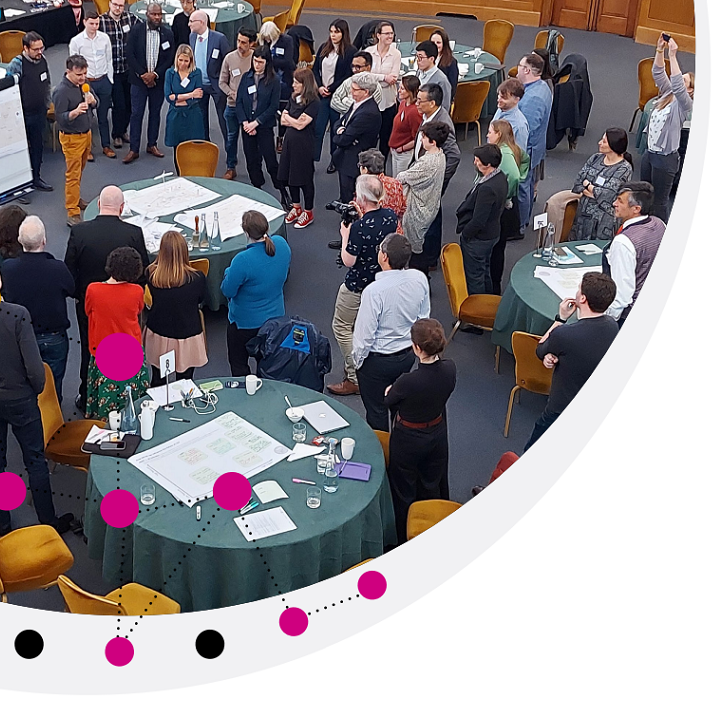CE-Hub, April 2022
Redrawing the circle: integrating consumption into the circular economy
2020, Camacho-Otero
Abstract
In 2018 and 2019, social protest in France and Ecuador against measures designed to disincentivize fossil fuel production illustrated how sustainability measures that do not consider consumption aspects can result in violent backlash from society. Citizens in both countries decidedly opposed measures to eliminate fossil fuel subsidies because of the short-term implications in their livelihoods. Even though these measures were aligned with a vision for a low-carbon future, their implications for consumption were too significant that had to be rolled back by the government. This simplified example illustrates how sustainability initiatives do not need to be only technically feasible and desirable for businesses and governments. They also need to consider citizens in their role as consumers. With the rise of the circular economy, an initiative that aims at improving resource efficiency and thus, sustainability, a significant amount of research has been conducted about how businesses, cities, countries and regions can transition towards a circular future. Business models have been defined. Regional strategies have been created; national policies have been produced. Such interest has also reflected in the extension of scientific research conducted addressing production aspects, primarily.
In contrast, work considering consumption aspects has been limited. Existing definitions of the circular economy do include the concept of consumption or specifically indicate that it is enabled by responsible consumers, besides business models. However, not much has been done describing what the circular economy means for consumption processes for consumers and policy initiatives supporting sustainable consumption. This lack of consideration of the consumption side of the circular economy results in the creation and development of solutions and interventions that may not address consumer needs, which can prevent the diffusion of circular offerings and intervention.
This research project aims at expanding the knowledge about consumption in the specific context of the circular economy, and it does so by providing insights into three aspects. First, what are the implications of circularity for the consumption process? Second, what are the factors and conditions that enable the acceptance and the adoption of circular offerings by consumers? Moreover, lastly, how design tools for circularity incorporate consumption and consumers considerations that can help them create solutions that have a user perspective.
The thesis comprises six studies addressing these three topics. The first study answers the question about the extent of research around consumption and consumer issues for the circular economy and specific circular solutions. Because one of the arguments recent research about the circular economy suggests the lack of consumer acceptance and adoption is that there is not enough knowledge on the topic. Hence, the first step of this project was to assess to what extent this statement was accurate by conducting a systematic literature review of the state of the art. Studies 2, 4 and 5 address the third research question about factors and conditions for acceptance and adoption by consumers. Studies 2 and 5 focus on consumer acceptance factors for two product categories, clothes and toys while study 4 addresses conditions and processes of adoption for a circular practice, clothes swapping, using a social practice perspective. It specifically explored how swapping as a circular practice emerged and how it attracted practitioners in a specific socio-economic setting.
The third study addresses the concern of what are the implications of circularity for the consumption process by using input from actual users of existing circular offering in a specific product category. I chose to work with clothes as the fashion sector has a significant potential for improving resource efficiency through circular economy solutions. The study focuses on understanding and describing the different moments a consumer goes through when consuming a use-oriented product-service system and identifying different opportunities for business designers to enable circulation. The last study addressed the question about how circular design tools can integrate these concepts of the consumption process, consumer acceptance factors and adoption of circular practices. It provides suggestions and recommendations on what should be considered when creating tools for developing circular offerings. It was an analysis of five tools available today using the framework resulting from the previous studies.
Based on these six studies, it was found first that contrary to what available circular economy reviews suggest, there is a significant amount of research addressing consumption and consumer aspects in the context of circular solutions. Less has been done regarding the circular economy concept, as it emerged more recently, and research is growing. Second, the consumption process in the circular economy is not only about acquiring, using and disposing of products as suggested before, but it includes additional moments of appropriation, appreciation, devaluation and divestment within the using moment of consumption. Because of this, if materials and products need to circulate, companies, designers and policymakers should use this understanding of an extended consumption process to map intervention opportunities to enable circulation.
Third, the process by which the circular economy and circular offerings are going to become mainstream and diffuse in society consists of at least two moments, acceptance and adoption. Acceptance refers to the positive intention people have regarding engaging with specific circular offerings and in general, with the circular economy. Several aspects need to be considered, to improve acceptance, including economic, psychosocial, cultural and socio-material. However, the intention is not going to translate into adoption, necessarily, mainly because of circular offerings’ characteristics. Consequently, it is necessary to zoom out from the individual to the practice level and see how circular offerings become part of social practices and how those practices are going to attract people to engage with the circular offering. Based on the analysis conducted, for a circular offering to become part of a social practice, the elements of the old practice need to change, and the links between such elements need to break in order to make space for the circular offering. The new practice needs to be spread in society, and people need to be exposed to it. If a new practice attracts practitioners depends on the capitals and histories of potential carriers as well as on the links with other practices. Thus, these elements need to be considered when creating interventions to support the adoption of circular offerings. By having this dual approach, a zoom-in approach, that looks into the individual aspects that drive acceptance and a zoom-out approach to look for the conditions that enable circular offerings to become part of a practice and thus being adopted, circular economy stakeholders can better integrate relevant consumption and consumer considerations.
Finally, and after assessing existing design tools for circularity, it was found that some of them do consider some of these aspects, but not all. This finding is surprising since Design is user centric and context-specific. However, the available tools are more focused on the production and technical process and do not guide how to engage consumption and consumer aspects. It is suggested that circular design tools acknowledge there is a consumption process for the solution they are creating by using the six-moment consumption process, so they can identify what it is that the consumer needs to do concerning their solution. Second, they need to zoom in to that consumer or consumers and investigate consumer profiles and understand the four groups of factors suggested. Then they should zoom out and investigate the context of the circular offering and see what elements characterize the practice that serves as the context for the offering (the images, skills, material). It is also essential that they understand how the linkages between those elements can be intervened to facilitate. First, the integration of the offering into the context and second, they must find ways for that new practice to recruit people.
This research has several limitations. Data was collected from different geographies, different product types, so the insights are not transferable to other products and geographies. However, this was not the aim of the research, but to provide insights that can be used as guidance for further research. The studies could be replicated for different product categories and geographies to compare results and identify similarities and differences. The last research question is limited to providing recommendations, but a prototype was not developed. However, there are opportunities to create tools that incorporate these recommendations in the future. Only two ontological perspectives were used, one based on the individual and the second one on social practices.
Nevertheless, in consumption other approaches are focusing on social structures. This research project did not use them because its objective focused on the dimensions that can be addressed by designers, product and service designers for example. Structural change happens at ample time and spatial scales that go beyond the influence space for single designers, companies or governments. However, these theories have essential contributions to the discussion about transitions towards the circular economy and consumption that need to be considered but were beyond the scope of this research.






